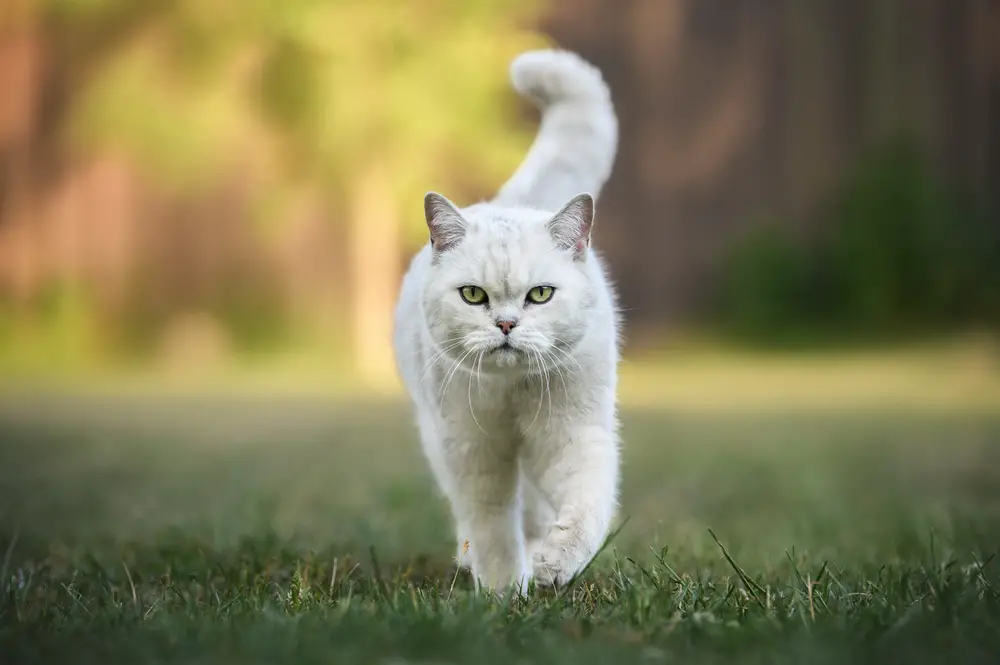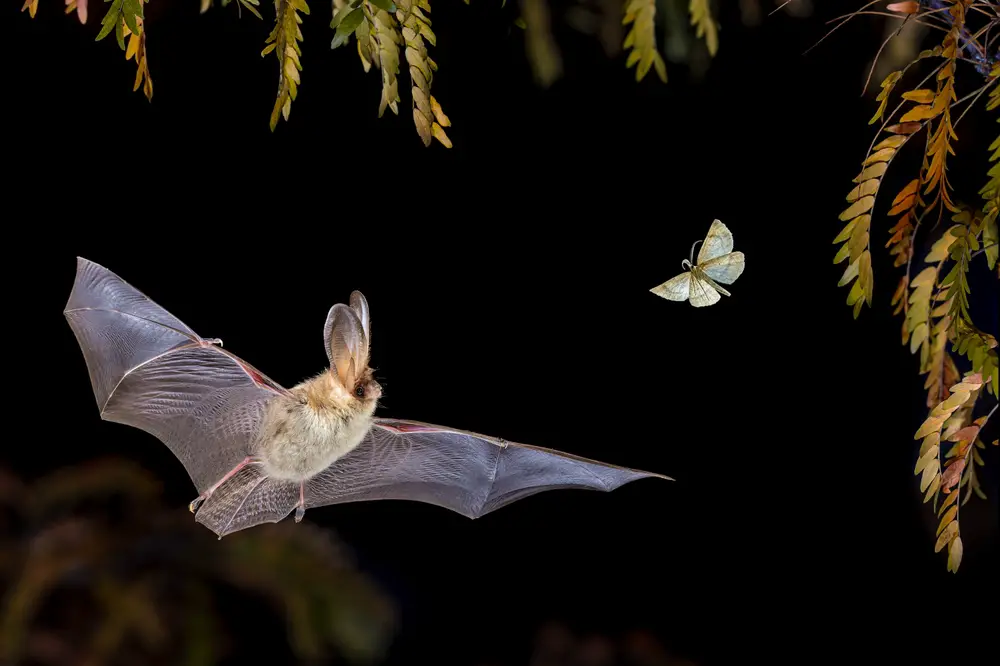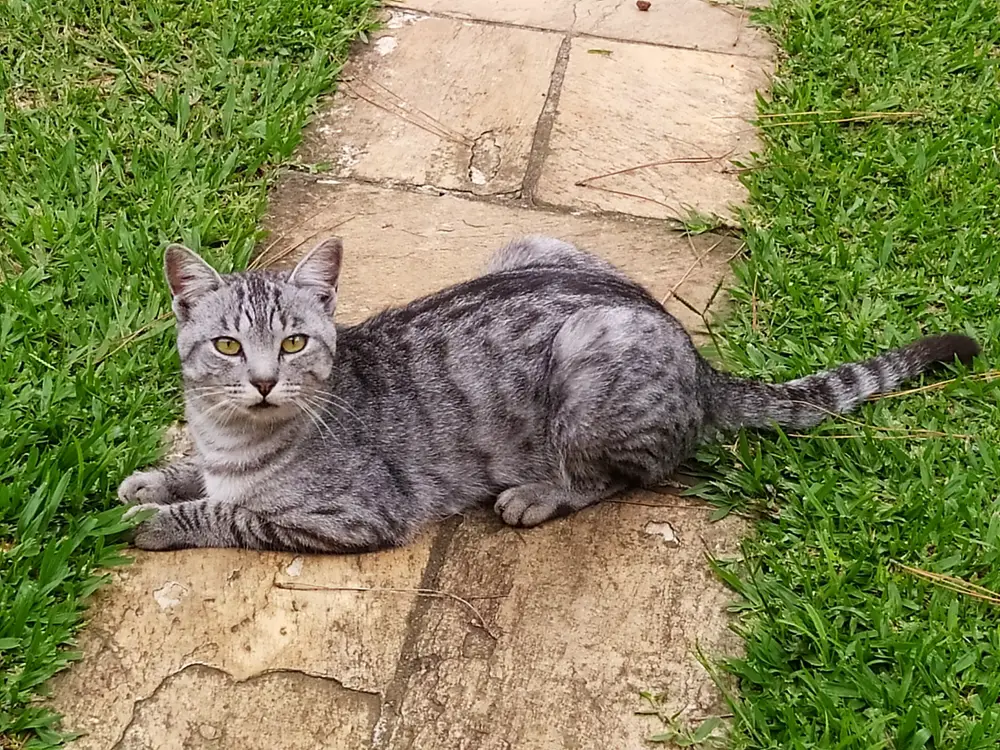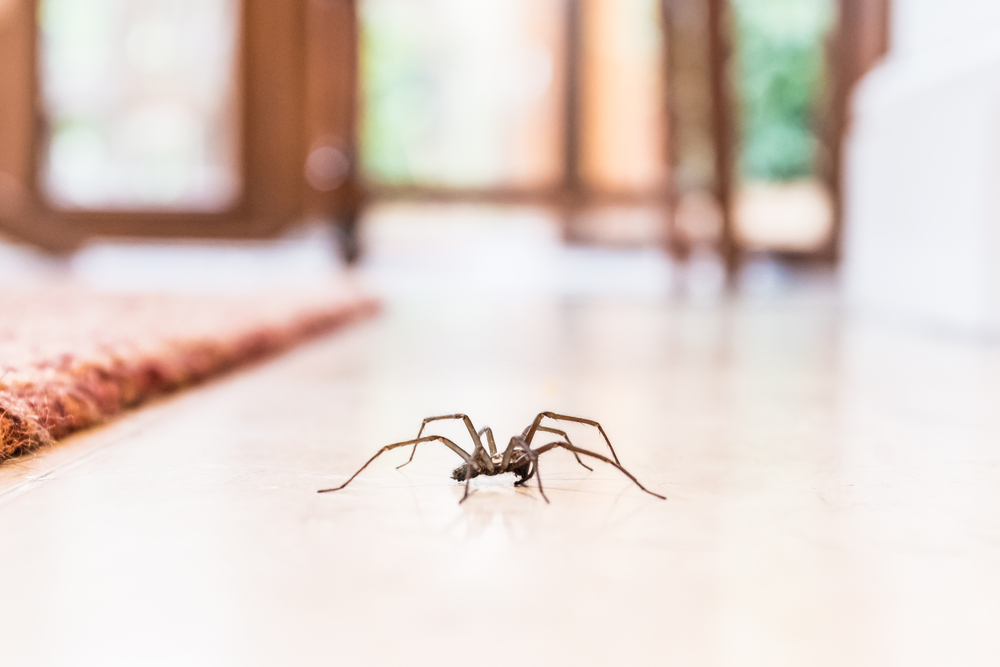While your cat may seem to be dozing off without a care in the world, it’s actually tuned into a symphony of sounds that you can’t even hear. Cats have evolved with an extraordinary sense of hearing, capable of detecting high-frequency noises that are utterly inaudible to humans. Their acute auditory abilities are not just fascinating; they’re a survival mechanism. Here are 13 everyday noises your cat can hear that humans can’t even detect, giving them a unique auditory edge in the world.
1. Mouse Squeaks

Cats can hear the high-pitched squeaks of mice, which are typically outside the range of human hearing. These ultrasonic sounds are a significant component of a cat’s hunting toolkit. For your feline, this is the auditory equivalent of a dinner bell, signaling a potential meal nearby. This acute ability to hear ultrasonic frequencies is why cats are such efficient hunters.
Research from the Journal of Comparative Physiology shows that cats can hear frequencies up to 64 kHz, well beyond the human range of 20 kHz. This adaptation is crucial for detecting the tiny sounds rodents make, which often include ultrasonic calls. Such evolutionary fine-tuning allows your cat to sense and locate prey with precision, even in total darkness.
2. Light Bulb Hum

To you, a light bulb might seem silent, but your cat hears the faint, high-frequency hum it emits. This sound is generated by the electrical current running through the bulb. While typically too subtle for human ears, it forms part of the ambient noise environment your cat is constantly monitoring. Next time your cat seems to be staring at the light fixture, it might just be tuning into its peculiar concert.
Understanding these capabilities can change how you perceive your environment through your cat’s ears. The continuous hums of electricity can be distressing or intriguing for different cats. It’s a reminder of how much more vibrant and complex the auditory world is for them. This might explain some of their seemingly inexplicable staring or irritation with household items.
3. Insect Wing Beats

The rapid flapping of insect wings is another sound that falls into the cat-hearable-but-human-invisible category. To your cat, a fly buzzing across the room creates a mini-symphony of quick, repetitive sounds. This ability is not just about annoyance; it’s an important cue for play and hunting behavior. Your cat’s ability to hear these wing beats can transform a mundane living room into a captivating hunting ground.
A study published in the journal Animal Cognition highlights how cats use their keen sense of hearing to track and capture small prey. This skill is part of the broader sensory arsenal that complements their eyesight and whisker sensitivity. It allows them to react swiftly to the smallest of movements or sounds. These moments are not just play but a manifestation of deep-rooted predatory instincts.
4. Dog Whistles

Dog whistles are designed to be heard by canines, but cats can easily pick up on these high-pitched signals too. While humans are oblivious to the sound, your cat’s ears perk up at the distinct pitch. This sensitivity means that your cat could potentially react to a sound meant for another animal altogether. It’s a testament to the finely-tuned nature of your cat’s hearing abilities.
The range of frequencies that a cat can detect often overlaps with intentional signals meant for other animals. It’s not unusual for a cat to react to a dog whistle — they might become alert or even irritated. This is one of the many ways your cat interacts with its environment on a level that remains hidden to you. It’s a fascinating layer of communication that operates just beyond human perception.
5. High-Frequency Machines

Certain high-frequency sounds from machines and appliances are detectable by cats and remain inaudible to people. These can range from a distant vacuum cleaner to electronics with high-pitched operational sounds. For your cat, these noises can be as clear as day, adding another layer to their understanding of household dynamics. This heightened awareness can trigger curiosity or stress, depending on the sound’s association.
An article in the Journal of Feline Medicine and Surgery discusses how environmental noises can affect feline behavior. Cats often associate high-frequency machine sounds with activity and movement. This perception can lead to curiosity as they explore the source or anxiety if the noise is persistent and annoying. Understanding this can help you create a more comfortable environment for your pet.
6. Bat Calls

Cats can hear the echolocation calls of bats, which are typically beyond the human auditory range. These ultrasonic calls are essential for bats’ navigation and hunting, but they inadvertently provide cats with another layer of environmental data. Your feline friend might seem to be gazing at nothing, but in reality, it could be listening to the nocturnal activities unfolding outside. This ability enriches their understanding of the world around them, extending beyond visible stimuli.
In environments where bats are present, cats might become more active at night, responding to the sounds of these flying mammals. It’s a reminder of how interconnected ecosystems are, with one species’ survival mechanism serving as a secret signal to another. This hearing capability underscores the predator-prey dynamics that have shaped the evolution of many species, including your ever-attentive cat.
7. Earth Vibrations

Beyond typical hearing, cats can detect minute vibrations that often precede earthquakes. These are not sounds in the traditional sense but are felt as low-frequency vibrations. For your cat, this sensitivity can act as an early warning system, often prompting them to act restless or anxious before seismic activity occurs. It’s a skill that humans have long observed in various animals, often using it as a predictor of natural disasters.
A study published in the Bulletin of the Seismological Society of America found anecdotal evidence of animals, including cats, displaying unusual behavior before earthquakes. This sensitivity is believed to stem from the ability to detect vibrations through their acute sense of hearing and their paws. While more research is needed, it’s a compelling example of how cats engage with the world in ways that can seem almost supernatural. It serves as a reminder of the multifaceted nature of their sensory experiences.
8. Rustling Leaves

To a cat, the gentle rustling of leaves is not simply a background sound; it’s a dynamic part of their sensory environment. While you might only perceive a gentle rustle, your cat can detect the subtle variations in pitch and frequency. This sound can alert your cat to the presence of potential prey or the approach of a larger predator. It’s a skill that speaks to the survival instincts deeply embedded within them.
The sound of leaves rustling can also be soothing, providing a natural backdrop that mimics the environment of their wild ancestors. For indoor cats, these sounds can offer mental stimulation and a sense of connection to the outside world. This natural symphony can trigger an array of responses, from playful curiosity to a state of heightened alertness. Understanding this helps you appreciate the richness of your cat’s auditory world.
9. Silent Meows

Cats are capable of making sounds that are beyond the range of human detection, sometimes even meowing in pitches that only other cats can hear. This communication method is subtle and often unnoticed by their human companions. While you might think your cat is merely opening its mouth without sound, it could be engaging in a complex dialogue with another feline. This ability underscores the layered ways in which cats interact with each other and their environment.
The phenomenon of the silent meow is a fascinating aspect of feline communication. It highlights the complexity of their social interactions and the range of their vocal capabilities. Even if it seems like nothing is happening, your cat might be expressing a world of emotions and intentions through these inaudible messages. This form of communication can be particularly prevalent in multi-cat households where non-verbal cues are essential for harmony.
10. High-Pitched Musical Tones

While you enjoy your favorite tunes, your cat might be hearing additional high-pitched tones layered within the music. These notes contribute to your cat’s perception of music in a way that is entirely different from your experience. What seems like a pleasant melody to you might be an intricate orchestral performance to your feline friend. Cats’ ability to detect these nuances adds a unique dimension to how they experience sound.
The auditory experience of music for cats can be both delightful and overwhelming. Depending on the composition and volume, it might engage their curiosity or cause them to retreat to a quieter space. It’s another example of how cats process the world differently, guided by a sensory palette richer than ours. Understanding this can help you choose music that’s more soothing than stressful for your pet.
11. Tiny Spider Movements

Small invertebrates, like spiders and beetles, create sounds through movement that cats can hear, but you can’t. This auditory ability allows your cat to detect tiny creatures moving through the grass or around your home. To your cat, these sounds are not just background noise; they’re an invitation to explore and maybe even hunt. The predator within them awakens, turning their environment into an auditory playground.
This sensitivity to minute sounds is a testament to your cat’s evolutionary heritage as a skilled hunter. It explains their fascination with seemingly invisible targets and their sudden bursts of activity. These moments remind us of their wild ancestry and the instincts that remain a core part of their personality. It’s a captivating glimpse into a world filled with sounds that escape human perception.
12. Distant Animal Calls

Cats can hear the distant calls of other animals, which can be completely inaudible to humans. These sounds can alert your cat to the presence of other wildlife, influencing their behavior and emotional state. This ability not only connects them to the broader ecosystem but also influences their territorial instincts. What might seem like a peaceful backyard to you is a complex network of acoustic signals for your cat.
The ability to hear distant calls can alter how your cat engages with the environment. It can trigger curiosity, cautiousness, or even a defensive posture. This awareness of distant sounds keeps them in tune with their surroundings, maintaining a connection to the natural world. It’s a fascinating aspect of their sensory experience, bridging the gap between domestic life and the wild.
13. Whispered Conversations

If you’ve ever wondered why your cat seems to be eavesdropping on your whispered conversations, it’s because it can hear those soft, subtle sounds with ease. While you might strain to catch a breathy whisper, your cat hears it clearly. This auditory skill connects them to the human world in ways that often go unnoticed. It’s a reminder that your cat is always more aware of you than you might think.
This heightened hearing is part of what makes cats such perceptive companions. They tune into the emotional undertones of your voice, responding not just to words but to mood and intent. This connection fosters a deep bond, as they sense and react to the nuances in your communication. It’s another layer of the rich tapestry that forms the human-cat relationship, reminding us that they’re listening, even when we think they’re not.
